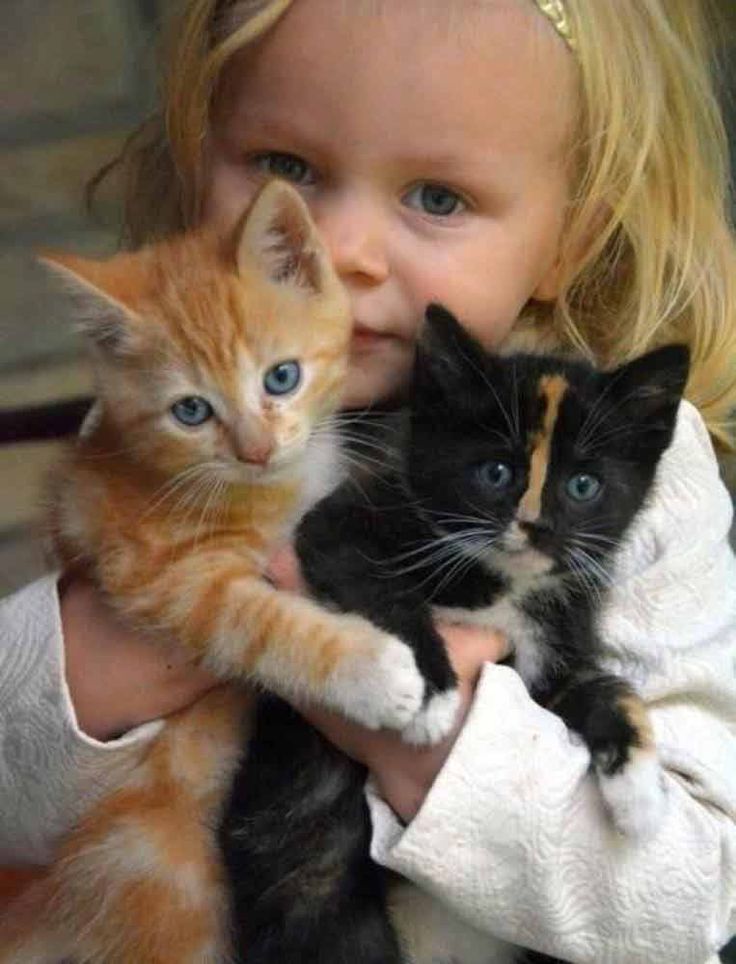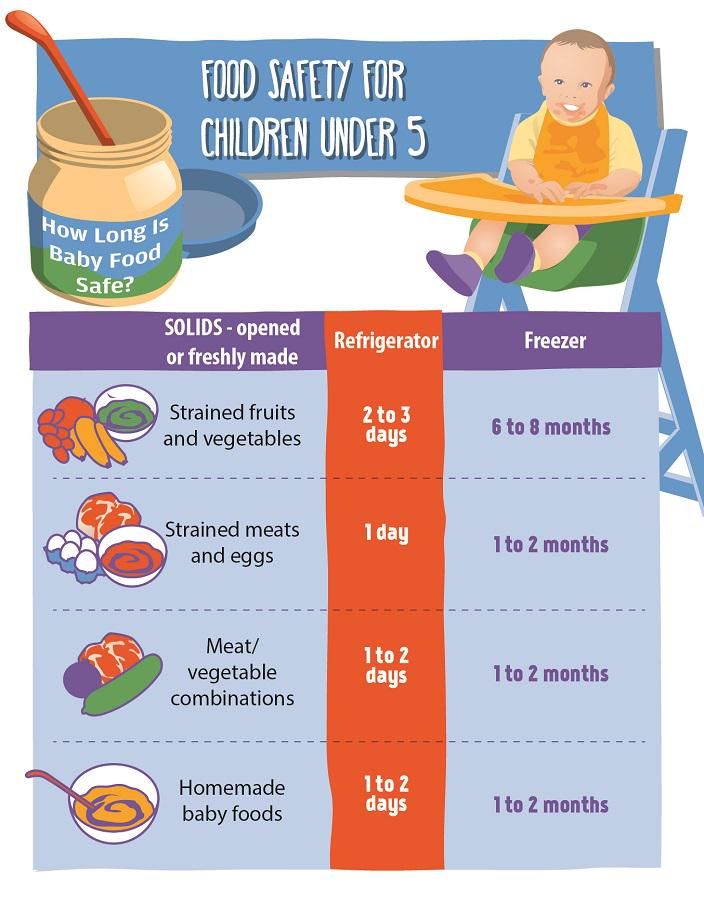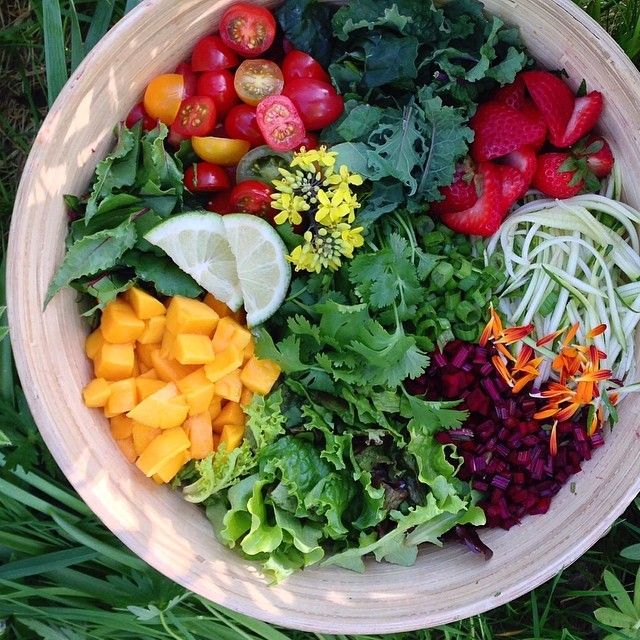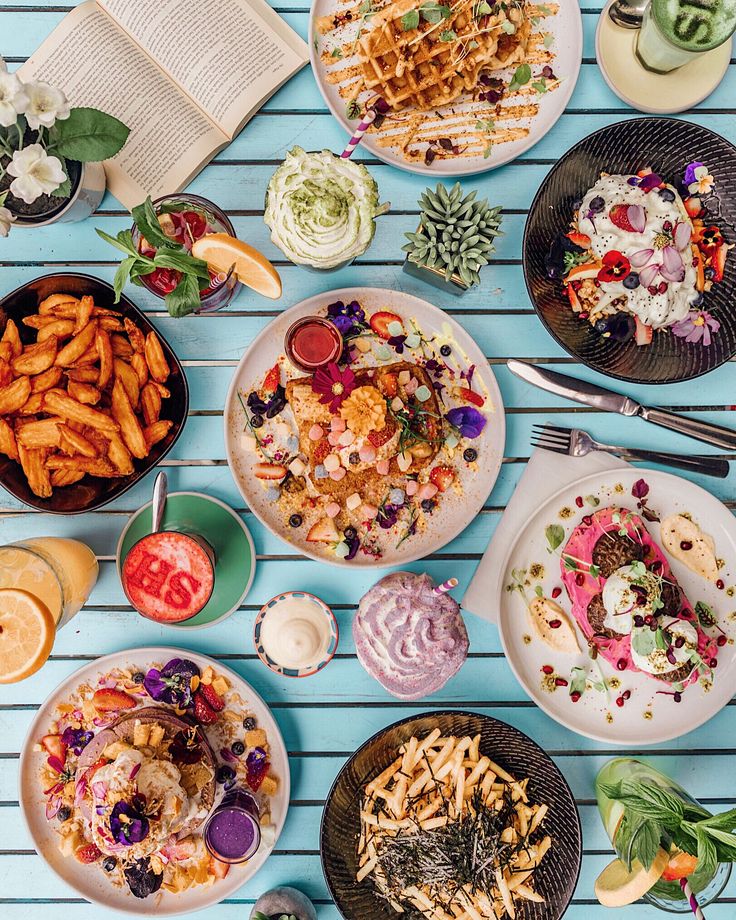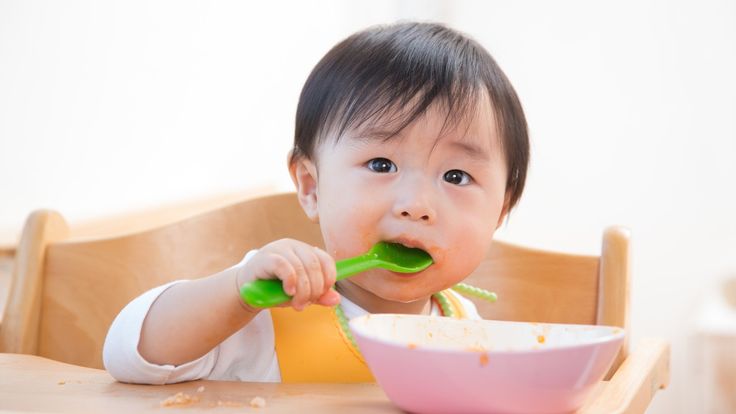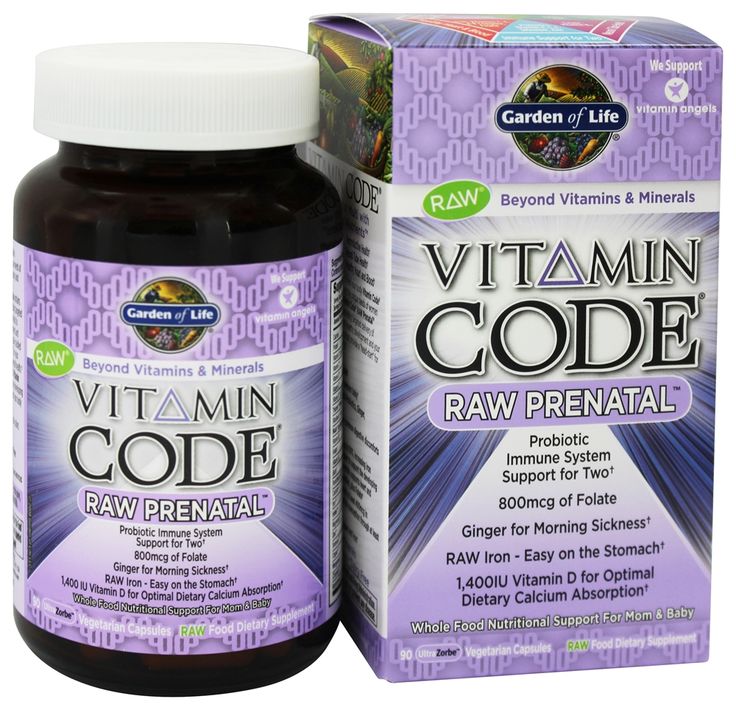Best thing to feed baby kittens
Kitten Feeding Week by Week
Feeding orphaned kittens can feel like a full-time job, especially in the beginning when they need to be fed the most. But it’s also incredibly rewarding, and before you know it, your kittens will be eating on their own and soon ready to find homes. The feeding protocols below are provided by the Kitten Nursery of Salt Lake County Animal Services, in partnership with Best Friends Animal Society–Utah.
Kittens one week old or less: Bottle-feeding
- Food type: Formula
- Frequency: Every 2 – 3 hours (8 – 12 times per day)
- Amount: 3 – 4 cc per feeding
Two-week-old kittens: Bottle-feeding
- Food type: Formula
- Frequency: Every 3 hours (8 times per day)
- Amount: 5 – 6 cc per feeding
Three- to four-week-old kittens: Bottle-feeding
- Food type: Formula
- Frequency: Every 4 hours (6 times per day)
- Amount: 13 – 17 cc per feeding
Four-week-old kittens: Begin feeding gruel – Weaning stage
- Food type: 1/2 can per kitten of gruel (gruel instructions below) in a dish and dry kitten food in a dish, and dish full of water at all times.
Plus formula three times per day.
- Frequency: Keep kibble, water and gruel in cage at all times.
- Give 13 – 17 cc of formula every 8 hours (3 times per day).
- During bottle-feeding sessions, try to get the kittens to also eat gruel off a spoon or tongue depressor and from a dish (see instructions on making gruel for more tips). It is important to start getting small amounts of gruel into their stomachs.
- Note: At this time, also introduce litter box; kittens can eliminate on their own at this age and do not need to be stimulated to go anymore.
How to mix gruel
Small batch (for one kitten): ½ can of wet kitten food mixed with ¼ can of formula (use an empty food can as a measuring cup).
Large batch: Whisk 8 cans wet kitten food with 4 cans of fresh, warm formula (use the empty food can as a measuring cup). At this age, kittens like their food a little lumpy so they can chew.
Note: Substitute the warm water for formula in gruel for kittens 5 weeks and older.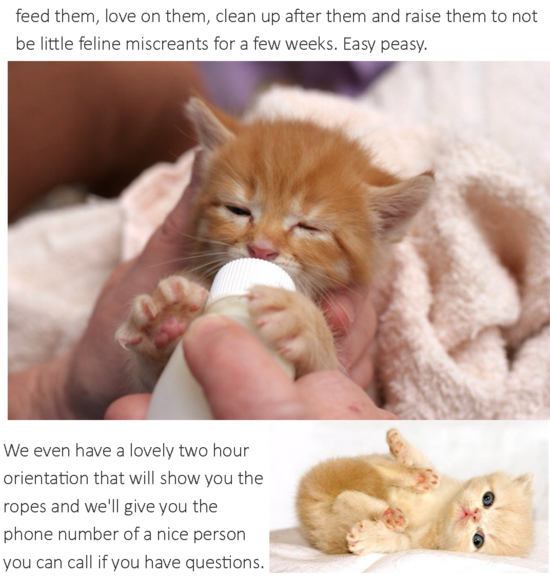
Helpful tips when using gruel:
- When introducing kittens to gruel, put gruel in a flat dish and place kittens near the dish. If they do not start to eat on their own after a few minutes, use tongue depressor or spoon to scoop gruel into kitten’s mouth. You may have to open their mouth and put a little in. You can also put a little gruel on their nose and see if they will lick it off. Sometimes the kittens need to adjust to the new taste.
- Once kitten starts to eat gruel off the spoon or tongue depressor (may take a few feedings for them to figure this step out), slowly start to lower it towards the dish of gruel. The kittens should easily transition from the spoon or depressor to the dish (may take a day for them to start eating out of the dish regularly).
- During the weaning process, kittens still need to be bottle-fed three times per day (about every 8 hours) to ensure they are receiving proper nutrients.
Five- to eight-week-old kittens: Solid food
Food type: ½ can per kitten of kibble in a dish and wet food in a dish at all times, and a dish full of water at all times
- Kittens 3 to 5 weeks should be given baby cat kibble.

- Kittens 5 to 6 weeks should be given kitten kibble and kibble should be mixed into the wet food.
- Kittens 7 weeks and older should eat mainly dry kibble.
- Weeks 5 and 6 are transition weeks where the two foods (what they were eating and what they will be eating) should be mixed together so their tummies do not get upset by the change in diet. Gradually decrease the amount of food they were eating while increasing what they will be eating over the course of 7 days.
Spay or neuter and adoption
Eight-week-old healthy kittens are fully weaned and should soon be ready to be spayed or neutered and to find their new forever homes. It is much easier to find homes for eight-week old kittens than it is if you wait longer, so start setting a plan early on. Sharing photos of the kittens with friends and family as they grow, and telling everyone you know that you’ll be looking for homes for the kittens is a great way to find homes. For more advice on finding homes for the kittens, see this guide on finding homes for homeless pets.
It is also important to ensure that all the kittens are spayed or neutered, so they don’t accidentally add to the thousands of unplanned litters of kittens that enter shelters each year. Find a low-cost spay/neuter clinic near you.
While caring for orphaned kittens is a lot of work, it’s also a lot of fun. The most rewarding part is watching your charges grow up and go into new homes. And the best part is that you can feel good knowing that you helped keep kittens — the most at-risk animals to enter shelters — safe and sound.
More about abandoned baby kitten care
Note: This article is the last in a four-part series on caring for baby kittens who are abandoned.
Photos by Sarah Ause Kichas
Categories:
CatCaring for Pets
Milk, Formula, or Food? Here's What To Feed Your Kitten During the First Year
Feeding your kitten properly from birth to adulthood is the best way to keep your pet healthy and happy.
Kittens have very different nutritional needs than adult cats. That means they need to be fed foods that are specially designed just for them. Most of the time, a mother cat will take care of a kitten’s nutritional needs from the day it’s born until it’s about 4 to 6 weeks old. And if you find yourself in the unfortunate situation of needing to feed an orphaned newborn kitten, those fluffy bundles of joy will be completely dependent on you for their nutrients.
Feeding a Newborn Kitten
In an ideal situation, the kittens’ mother will nurse them for their first few weeks. The nutrients in her milk helps the newborn kittens transition from milk to solid food. Consuming these important nutrients in her protein-rich milk helps form the kittens’ immune systems and offers protection from disease.
If you stumble upon a litter of new kittens whose mother is unable to feed them, these orphaned kitties will need to be bottle-fed a suitable replacement for their mother’s milk.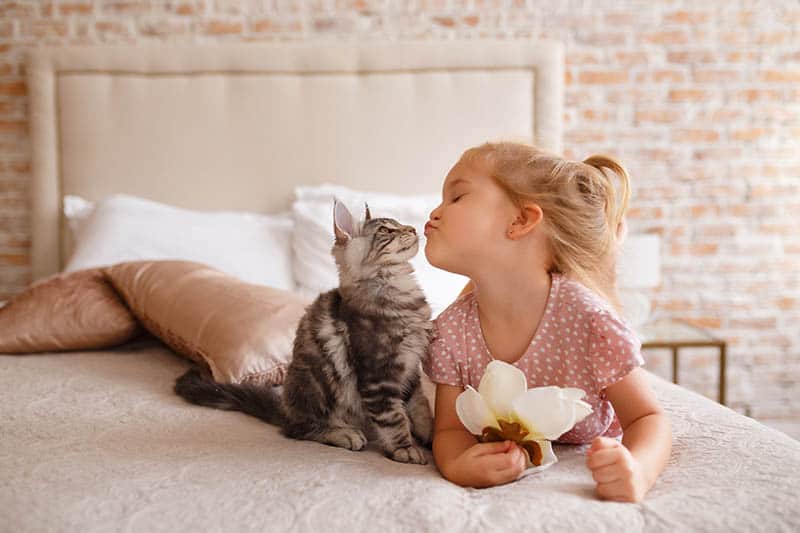 Newborn kittens up to 4 weeks old should be fed a kitten milk replacement formula (either commercial or homemade). Carlene Strandell, founder and director of the non-profit Smitten with Kittens, a foster-based kitten rescue that operates in Tallahassee, Fl., says you need just two things for feeding a newborn: a kitten bottle with a nipple, and kitten replacement formula. Once you have those two essential items, then you can begin to bottle feed the kitten their special formula.
Newborn kittens up to 4 weeks old should be fed a kitten milk replacement formula (either commercial or homemade). Carlene Strandell, founder and director of the non-profit Smitten with Kittens, a foster-based kitten rescue that operates in Tallahassee, Fl., says you need just two things for feeding a newborn: a kitten bottle with a nipple, and kitten replacement formula. Once you have those two essential items, then you can begin to bottle feed the kitten their special formula.
When to feed a newborn kitten depends on how frequently they need to eat. Strandell says kittens under 2 weeks old need to feed every 2 hours (at least). Think that’s a lot? Compared to older cats who may only eat once a day, it sure does feel like it. But Strandell says not to worry about overfeeding a newborn. “When a kitten is full, it will stop eating,” she says. “A newborn kitten will turn its head when it has had enough.” Kittens who are 2 to 4 weeks of age should be bottle fed every 3 to 4 hours. For more details about when to feed a kitten formula, check out this feeding schedule chart.
Feeding Kittens 4 to 5 weeks Old
By the time a kitten is about 4 weeks old, it’s often ready to start eating solid food. Introduce solid food slowly into their diet by mixing a little canned kitten food with milk replacer on a tablespoon. It may take a few tries, but eventually, your kitten will be interested enough to begin lapping up the mixture on its own. Sometimes it helps to gently rub a tiny bit of canned food on the kitten’s lips to give them a little sampling of what’s available. Never rush this process. A kitten will begin eating solid foods on their own schedule—a timeline that can vary from kitten to kitten.
Meanwhile, keep offering milk replacer in a bottle to make sure the kitten is maintaining their weight and getting all the nutrition they require. Weighing your kitten every day or so is also a good way to be sure your pet is gaining weight and developing properly. Make sure to provide a shallow bowl of fresh water once the kitten reaches 4 weeks of age.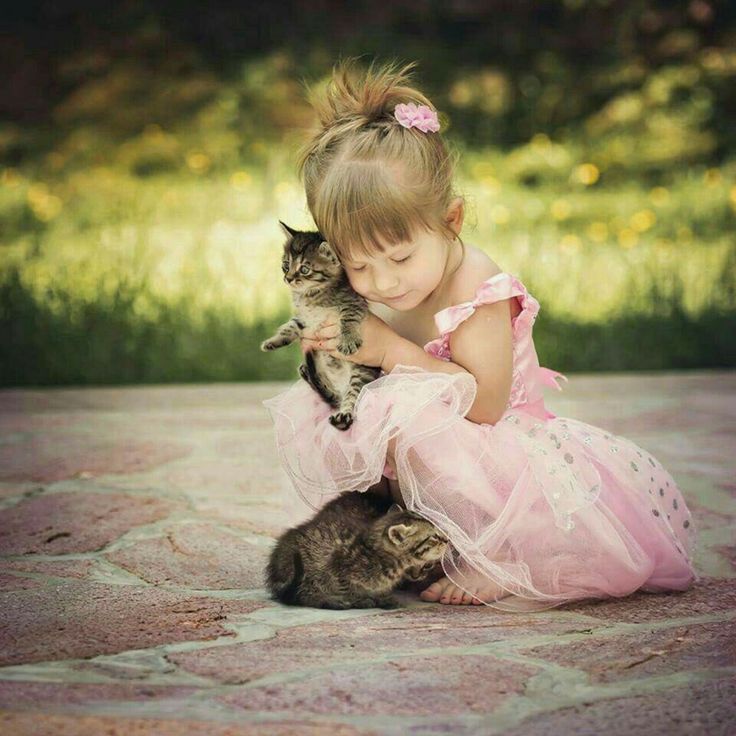
kitten with bowl of food
Credit: Benjamin Torode / Getty
Feeding Kittens 6 to 8 Weeks Old
When a kitten is 6 to 8 weeks old, it should be thoroughly weaned from the bottle and transitioned to solid foods. At this time, offer only food that’s been specially formulated for kittens. It’s a good idea to mix dry and canned food together so your pet experiences both at a young age. As your kitten ages, you can switch to an all-dry or all-canned diet. You should be feeding a kitten this age three to four times per day, depending on their appetite. It’s also important to keep a clean, shallow bowl of fresh water available at all times to keep your kitten hydrated.
Feeding Kittens 8 Weeks to 6 Months Old...And Beyond
Between 8 weeks and 6 months old, continue feeding your kitten three to four times per day. Only offer food formulated especially for kittens that says “complete and balanced” on the label. By the time your kitten is 6 months old, you can cut back meals to twice a day until they are a year old.
Choosing the Best Kitten Food
When it comes to kitten food, quality counts. Choose only food that has been certified by Association of American Feed Control Officials (AAFCO), which establishes nutritional standards for complete and balanced pet foods. This means that the food has been tested to make sure it is properly balanced for your kitten’s growing needs. If you’ve adopted a kitten from a shelter, find out what the kitten was eating previously and stick with that diet to avoid stomach upset.
Feeding a Stray Kitten
Sadly, in the spring and fall, it’s not uncommon to find a stray kitten in your yard or on the street. Stray kittens will need the same food and mealtimes as home-raised kittens, but you should take it to a veterinarian as soon as possible to better determine the kitten’s age and to check for parasites that could affect the animal’s growth.
What to Feed a Kitten That Develops Diarrhea
Loose, liquidy stools are not normal in kittens. Diarrhea in kittens can be caused by parasites, food issues, or something more serious like an underlying medical issue. Because diarrhea in your kittens can quickly lead to dehydration, replace the water in your kitten’s formula with unflavored Pedialyte solution to provide the glucose and electrolytes your pet needs. If your pet develops diarrhea, you need to quickly get your kitty to a veterinarian as soon as possible.
Diarrhea in kittens can be caused by parasites, food issues, or something more serious like an underlying medical issue. Because diarrhea in your kittens can quickly lead to dehydration, replace the water in your kitten’s formula with unflavored Pedialyte solution to provide the glucose and electrolytes your pet needs. If your pet develops diarrhea, you need to quickly get your kitty to a veterinarian as soon as possible.
When to Switch to Adult Food
It’s time to make the switch to adult cat food when the kitten reaches its first birthday. Avoid leaving food out all day for the kitten to snack on. If you’re able to hold their food until routine feeding times, it’s much easier to keep a closer watch of how much they’re eating. That way, if your cat is not eating enough—either because they simply don’t like the food, or for more serious health issues—you’ll know quickly so you can make a change and contact your vet if needed. Free-feeding your cat (leaving bowls of food out) can also lead to overeating and weight problems as your pet grows older, so creating scheduled mealtimes can help you keep an eye on any issues.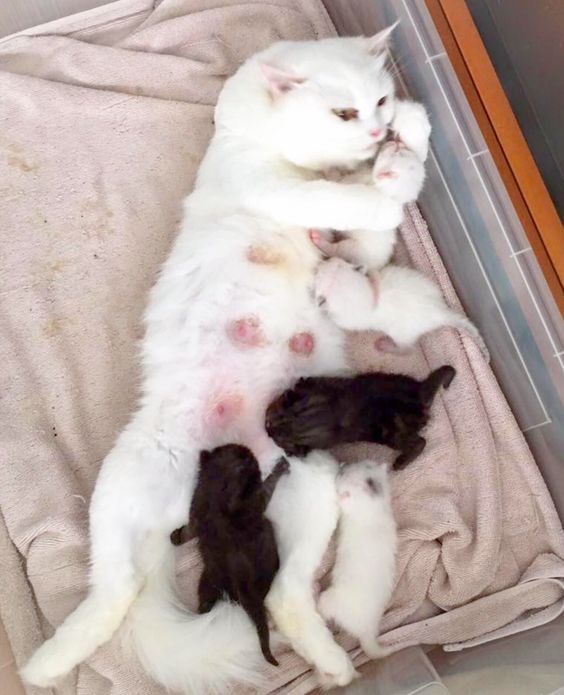
What is better to feed a kitten 1,2,3,4,5,6 months
A small kitten is a big responsibility. After all, it depends on the conditions in which it will grow, on the attitude of the owners, what kind of cat it will become. Nutrition plays an important role in raising a child. The diet must be composed correctly, contain minerals and vitamins necessary for proper growth and development.
Principles of proper feeding of kittens
In order for a kitten to turn into a big, strong, beautiful pet, and also to be satisfied and happy, it is important to understand what can and cannot be fed to small kittens. The basic principles of proper feeding include the following:
Balance. Cats are predators, which means that protein foods should prevail in the diet. On average, this is 50% of the total nutrition. The rest is carbohydrates and fats. It is also important that the growing body receives minerals and vitamins in sufficient quantities. If there are few of them in food, it is worth buying ready-made complexes and adding them to the diet.
Fresh. You can not feed the baby with something that is already stale or, moreover, has begun to deteriorate. Store-bought food should be fresh from the pack, natural food cooked today.
Correct temperature. Food should be warm, at a pleasant temperature. Hot freshly brewed must be pre-cooled, and taken from the refrigerator - warmed up.
Gradual introduction into the diet. A kitten should be accustomed to any new product gradually so that there is no poisoning or problems with the tummy. For the first time, you should give quite a bit to get acquainted with the taste. If the baby likes it, and the body does not have negative reactions, the amount of the product can be gradually increased.
Access to water. In addition to fresh warm food, the kitten should always have clean water at room temperature. You need to change every day.
Age tracking. What to feed a kitten at 5 months and 4 weeks is fundamentally different.
If you have any doubts about how to properly formulate a kitten's diet, you should consult your veterinarian.
Common mistakes
Usually the owners face the main question: what can be fed to little kittens, what food format to teach? The choice is between store-bought food and natural food. In both cases, you can make mistakes that will be detrimental to the baby.
In the case of a straight woman, some owners believe that it is possible and necessary to give everything that they eat themselves. And they literally feed the kittens from the table: whether it's fried potatoes, dumplings or pastries. Such food will be not only not useful, but also harmful for an adult cat, and even more so for a growing organism. It is even worse when pets are fed with waste from the table - that which has already begun to deteriorate, leftovers, bones.
In fact, natural nutrition means that you will prepare fresh different foods every day for the kitten from those products that are allowed and healthy for him.
Buying cheap kitten food, especially very young ones, is one of the biggest mistakes. It is prepared mainly from offal, fat, bone and vegetable flour with flavoring additives that are addictive. There is practically nothing useful for a kitten there.
It is also a mistake to feed babies food for adult animals. In different periods, the need for nutrients and their ratio vary. For example, what you can feed a kitten at 4 months and at six months is somewhat different. This must be taken into account.
Natural or prepared food? What to choose
Natural nutrition means that you have to stand at the stove longer and more often. After all, you will have to cook not only for yourself, but also for the cat. You will have to buy personally for him products. This is a troublesome business. Feeding ready-made food is easier. But then there is the question of costs. Cheap packaged food is not good for anyone, especially for kittens. And the expensive one often hits the pocket. Natural is better in this regard.
Natural is better in this regard.
On the other hand, a ready-made diet for a pet is more beneficial from the point of view that it is balanced. Contains the ratio of proteins, fats, carbohydrates, vitamins and minerals necessary for a kitten of a certain age. With natural nutrition, you will have to independently calculate how much meat you need, and how much cereals, and additionally buy vitamin complexes.
The golden mean is the approach in which the cat eats both prepared food and natural food. For example, in the morning and in the evening - a dish prepared especially for him, and during the day, while the owners are at work, he regales himself with dry granules.
Which foods are best?
Any brand of ready-made complete food includes a line of things that can be fed to small kittens. These include both dry and wet foods. Choosing which is better, you need to focus on the following recommendations:
- Wet food is recommended especially for small kittens up to 3 months.
 It is more easily absorbed and digested by a weak digestive system. In addition, liquid food for a kitten aged 1-2 months is preferable, because the teeth are still milk.
It is more easily absorbed and digested by a weak digestive system. In addition, liquid food for a kitten aged 1-2 months is preferable, because the teeth are still milk. - Dry food recommended for older kittens. It should be introduced gradually, first you can soak the granules in water or broth.
- The gastrointestinal tract of a cat is oriented, first of all, to fairly hard food that requires a long digestion. And as the animal grows older, it needs more of this food. The older the kitten, the more solid food should be in the diet, and vice versa.
- It is necessary to accustom to any food gradually - from small portions. The same is true if the kitten is on one brand and you decide to switch it to another. Do not change food abruptly, introduce gradually.
- It is necessary to adhere to the characteristics of the breed and the development of the animal. There are specialized foods for long-haired and short-haired kittens, Maine Coons, animals with chronic diseases, etc.
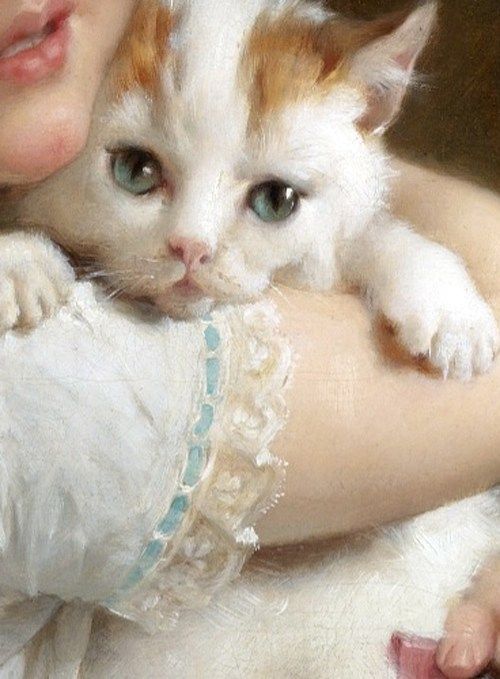
As for the manufacturer, the main criterion here will be the focus on the composition of the product and its cost. Frankly cheap food for small kittens does not contain anything useful. However, this does not mean that the most expensive trade names are the most useful. There are many worthy representatives in the middle price category. For example, Monge Cat, Royal Canin, Hill's and others.
As a rule, a quality complete food for kittens contains everything that is needed for the full growth and development of a pet. Additionally, the animal can be pampered with chewable and fortified treats, observing the recommended dosage.
Recommended and prohibited natural products
Protein foods should form the basis of the diet of the little predator. Then there are carbohydrates and fats. But saturated animal fats can harm a growing body. Therefore, the meat should be dietary - veal, lean beef, turkey, chicken. Pork and lamb should be avoided.
Cats love fish, but small kittens under 3 months old should not be fed.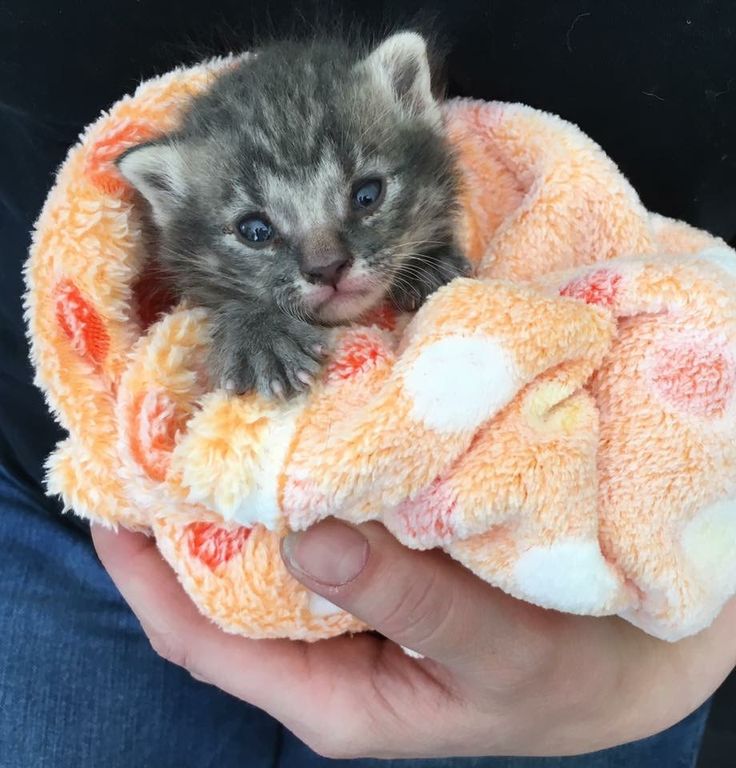 Then - no more than 2 times a week. Preference is given to marine fish. There are a lot of helminths in the river, with which the animal can become infected if the product is not cooked correctly.
Then - no more than 2 times a week. Preference is given to marine fish. There are a lot of helminths in the river, with which the animal can become infected if the product is not cooked correctly.
Kittens should also be given dairy products. This is cottage cheese, kefir, yogurt - the main thing is that they are low-fat, natural, unsweetened, without additives. In small quantities, you can give sour cream. As for cow's milk, it can cause intestinal problems. Serum is useful for kittens. But cheese is too heavy and fatty for a baby’s diet.
Another recommended addition to the menu for kittens is eggs. Quail are considered the most useful - they can be given raw. Chicken is better to cook, if we are not talking about products from our own domestic chickens.
Kittens should receive carbohydrates mainly from cereals. The most useful, easily digestible - oatmeal, buckwheat, wheat and barley porridge. Barley - practically not absorbed by the body of cats, it should not be given, like corn porridge. Vegetables are also a good source of carbohydrates and nutrients. Well suited pumpkin, carrots, cabbage, both fresh and boiled.
Vegetables are also a good source of carbohydrates and nutrients. Well suited pumpkin, carrots, cabbage, both fresh and boiled.
It is optimal to combine different products in one dish. For example, wipe cottage cheese with egg yolk. Boil oatmeal with chopped meat and carrots.
Here's what you can't feed a little kitten:
- legumes in any form;
- bread, pastries, sweets - homemade and store-bought;
- carbonated drinks;
- tea, coffee;
- chips, crackers and other snacks;
- food with the addition of hot spices, seasonings;
- salted and smoked fish, meat;
- chocolate.
All of the above restrictions apply to adult animals. Even if a pet begs for some product, he likes it and it's tasty - this does not mean that you need to indulge whims. For example, chocolate for cats is deadly and can lead to the death of the animal.
Rules for feeding kittens at different ages
Until the age of one month, kittens are breastfed. From the age of one month, kittens gradually begin to accustom themselves to additional products, they are taught to eat from a bowl on their own.
From the age of one month, kittens gradually begin to accustom themselves to additional products, they are taught to eat from a bowl on their own.
How to feed kittens of different ages:
- 1 month. Until this age, the baby ate only mother's milk, so do not immediately give him hard food. Supplements to the diet should have a delicate, light texture. Suitable liquid cereals, dairy products, meat, boiled vegetables, chopped in a blender in a puree. Feeding - 6-7 times a day.
- 2 months. All the same can no longer be crushed in a blender. Boiled vegetables, meat enough to cut into small pieces. You can also start giving ready-made food. Feed 6 times a day.
- 3 months. Now it is no longer necessary to cut into small pieces - you can also give large ones so that the kitten learns to chew food properly and strengthens its teeth. From this age, you can also gradually introduce raw meat and poultry into the diet. It is important to be sure of its quality in order to avoid infection with helminths.
 Also, a three-month-old kitten is already ready to eat dry food. Meals 5 times a day.
Also, a three-month-old kitten is already ready to eat dry food. Meals 5 times a day. - 4-6 months. This is the period of the main set of muscle mass. Therefore, when wondering how to feed a kitten at 4-5-6 months old, you should pay attention first of all to meat and poultry. Give food 4 times a day.
After six months, the kitten's diet is the same as that of an adult animal. Only up to a year kittens are fed three times a day. In a year, a pet is considered fully grown. And his feeding is carried out twice a day, in the morning and in the evening.
The most important role in shaping the health of a kitten is played by its feeding in the first six months of life. The balance and correctness of the diet determines how beautiful, healthy, active an adult cat or cat will be.
How to feed a kitten?
You have got a fluffy baby, he is undoubtedly insanely cute. But the question arises, what to feed the kitten and how often? What should be checked on food labels? In this article, we will answer these and other questions about feeding kittens.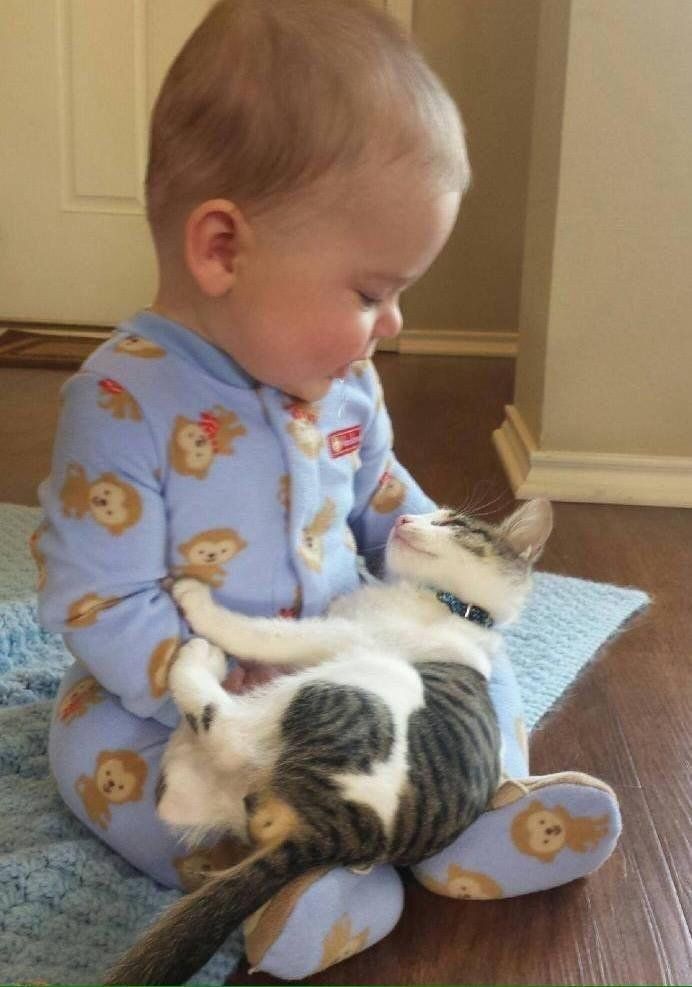
Correct understanding of the basics of feeding kittens
Water: Your kitten should have constant access to clean drinking water. Wash the bowl and fill it with water once or twice a day, and add water as it gets low. Your kitten will need more water if you plan to feed him commercial dry food. Important! Do not give your kitten cow's milk because it is difficult to digest and can lead to diarrhea.
Meat in the diet: your kitten cannot be a vegetarian. By nature, cats are meat eaters, they need it to survive.
Kitten Specialty Foods: Since kittens have different nutritional requirements than adult cats, it is not recommended to feed your kitten with adult cat food. Choose special food for him.
No human food: The food we eat usually does not contain the nutrients that cats need. And some food for people is completely dangerous for them.
Be sure to place the bowls that the kitten eats from and the toilet in different places, no one likes to do both in one place.
Optimal nutrition for a kitten: what to look for on a food label
Try to find quality food for your kitten that is well balanced and nutritious. But what are the nutritional needs of a kitten? All cats need a diet high in animal protein, amino acids such as taurine and arginine, fats and certain fatty acids (such as arachidonic acid), and vitamins. But kittens have a higher need for protein, amino acids, minerals, as well as some vitamins. Therefore, kitten food must have the right balance of nutrients.
When you read the label on a food package for adult cats or kittens, keep in mind that all the ingredients in the food are listed in percentage order, from highest to lowest. This means that what is most in the feed is listed at the beginning of the list of ingredients, and then they are arranged in descending order. Here are a few nuances to pay attention to.
Protein source. An animal protein source must be listed first. Look for a specific type of meat, such as chicken, salmon, lamb, rather than general protein in the diet.
Look for a specific type of meat, such as chicken, salmon, lamb, rather than general protein in the diet.
Additional source of taurine. Red meat and poultry are good sources of taurine. But the feed may also contain liver, for example, chicken liver or chicken heart - they are rich in taurine.
Fat source. Look for a specific source of fat in your formula, such as chicken fat, sunflower oil, or other oils.
Carbohydrates (grain component). In principle, kittens do not need grains such as corn or wheat, and for some they can even cause digestive problems. However, grain is often used in the production of cat food, as a kind of filler, especially in the composition of dry food. Knowing this, you can choose a diet that is low in grain or purchase a diet that contains no grain at all.
How often and how much should a kitten be fed?
Each kitten is unique, so the portion of food will depend on factors such as age and activity.
However, as a general rule, small kittens (3-6 months old) are recommended to be fed 3-4 times a day, and when they grow up to the age of six months, you can switch to feeding 2 times a day.
When looking at the amount of food for a kitten, always refer to the daily allowance indicated on the food package. Let this be your starting point and then you just need to divide the recommended daily allowance by the number of feedings per day. Remember that if, in addition to food, you treat the kitten, for example, with treats, then you should slightly reduce the amount of food so that the total caloric content of the food eaten by the kitten per day does not exceed the norm required for it. If suddenly the kitten has some health problems, then in this case you do not need to manually prepare dietary food for him, because special dietary food can be purchased at pet stores.
When the food is purchased, it remains only to determine the time of feeding the kitten. Most likely, it will depend on your schedule, try to stick to it.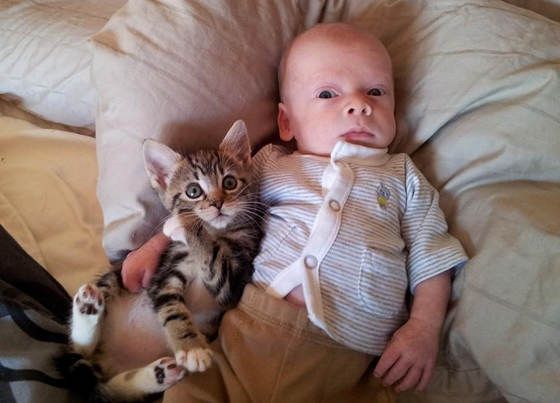
Natural and artificial food preservatives
Some kitten foods contain natural preservatives such as vitamin E or ascorbic acid, and some contain artificial preservatives. In fact, there is nothing wrong with either the first or the second case. Artificial preservatives have been used in pet food for over 30 years.
Foods containing natural preservatives may have a shorter shelf life and may also cost slightly more.
Dry food or canned food?
Both have advantages. So, canned food contains about 80% moisture, which adds water to the kitten's diet, which is good. And dry food is more convenient to feed, because it can be left in the bowl for a longer period.
However, it is easier for small kittens to eat canned food. While your kitten is growing and developing its teeth, provide it with canned food to ensure it gets all the nutrients it needs.
Buy pet food or cook at home?
Cooking your kitten's food at home can be very rewarding because only you can decide what to put in the bowl, ensuring the ingredients are of the highest quality.